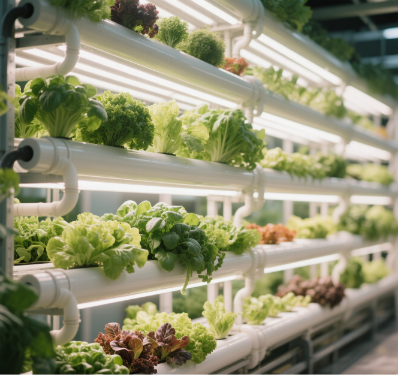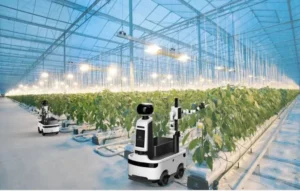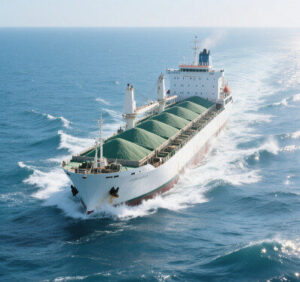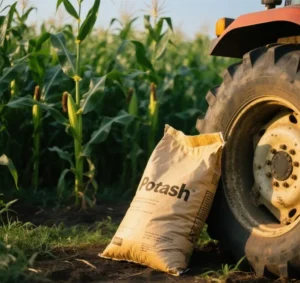China is the world’s largest producer and consumer of chemical fertilizers and is currently at a critical juncture in its agricultural practices. With an average application rate of 328.5 kg/ha — nearly three times the global average of 120 kg/ha — the country’s reliance on chemical fertilizers has resulted in severe environmental degradation and deteriorating soil health. This article explores the challenges of excessive chemical fertilizer use, the potential of organic and bio-organic fertilizers, and emerging trends and policies that are shaping a more sustainable future for Chinese agriculture.
The Crisis of Chemical Fertilizer Overuse
For decades, chemical fertilizers have been essential for maintaining high crop yields. This has enabled China to feed 20% of the global population with only 9% of the world’s arable land. However, the long-term overuse of these fertilizers has had adverse effects.
- Declining Fertilizer Efficiency: The effectiveness of chemical fertilizers has significantly decreased over time. For instance, 1 kg of fertilizer increased grain yield by 25 kg in 1975; however, by 2008, the same amount yielded only 8–9 kg of grain. This decline reflects diminishing returns from overapplication, with fertilizer use efficiency currently standing at 35%, far below global averages.
- Soil Degradation: Excessive use has led to soil acidification, compaction, and the depletion of organic matter. In southern China, soil pH levels often drop below 5.0, which is critical for crop health. In the northeast, the valuable black soil layer is thinning by 0.3–1 cm annually, a rate that could erode this vital resource within decades.
- Environmental Pollution: Runoff of nitrogen and phosphorus from fertilizers contributes to water pollution and eutrophication, affecting over 60% of China’s lakes and rivers. Additionally, producing urea, a common fertilizer component, releases 1.5–2 tons of CO₂ per ton, which exacerbates carbon emissions. China accounts for 28% of global urea production, making this a significant environmental burden.
To address these issues, China introduced the “Zero Growth in Fertilizer Use” policy in 2015. This policy aims to increase fertilizer use efficiency to 43% by 2025 and reduce dependency on synthetic fertilizers. This policy marks a significant step toward more sustainable agricultural practices.
The Underutilization of Organic Fertilizers
Despite their benefits, organic fertilizers are adopted relatively rarely in China, with usage rates ranging from 5% to 10%. This is much lower than in Japan (76%), Germany (60%), and the United States (46%). The main barriers to adoption include:
- Farmer perceptions: Many farmers prefer the quick-acting effects of chemical fertilizers to the slower release of organic alternatives.
- Economic Disincentives: Organic fertilizers cost 30–50% more than chemical fertilizers, which makes them less accessible to the 80% of China’s agricultural producers who are smallholder farmers.
- Logistical challenges: The prevalence of small-scale farming, with an average of 0.5 hectares per household, complicates the large-scale implementation of organic fertilization.
However, organic fertilizers offer significant advantages, including improved soil health, enhanced water retention, and reduced environmental impact. Each ton of organic fertilizer applied can sequester approximately 1.5 tons of CO₂, contributing to climate change mitigation. Studies show that applying organic fertilizers for three years can increase soil organic matter by 0.3–0.5%, reducing irrigation needs by 20–30%.
The Rise of Bio-Organic and Green-Efficient Fertilizers
In response to environmental and economic challenges posed by chemical fertilizers, China is turning to bio-organic and green-efficient alternatives. These innovative fertilizers combine organic matter with beneficial microbes to enhance nutrient utilization and soil health. Key trends include:
- Bio-organic fertilizers: Supported by policies such as the “Organic Replacement” initiatives in 17 provinces, these fertilizers are gaining popularity. Technological advancements, such as CRISPR-engineered microbes (e.g., salt-tolerant nitrogen fixers) and nano-coating technologies that improve nutrient release efficiency by up to 60%, are boosting their effectiveness. Government subsidies cover 70% of microbial fertilizer costs, accelerating adoption.
- Green-Efficient Fertilizers: Categories include coated slow-release fertilizers, stabilized fertilizers with inhibitors, and value-added fertilizers enhanced with bioactive compounds. These technologies have led to significant yield increases and fertilizer savings. For instance, the annual production of green-efficient fertilizers exceeds 20 million tons, which are applied to 33 million hectares. This results in an additional yield of 8–10 billion kg per year and 2 million tons of fertilizer savings.
Future Trends and Policy Drivers
Several key trends and policies are shaping the future of sustainable fertilization in China:
- Smart Fertilization: Integrating AI and IoT technologies enables precision farming, optimizing nutrient application and reducing waste. By 2030, China plans to digitize 50% of its farmland, using data-driven methods to reduce fertilizer use by 15–20%.
- Circular Economy Models: Converting livestock manure into organic fertilizers is a promising way to close nutrient loops and reduce environmental impact. China generates 30 billion tons of livestock manure annually, offering vast potential for resource recovery.
- Government Initiatives: Programs such as Guangdong’s 2025 plan, which allocates 17.5 million yuan for scientific fertilization programs and provides subsidies of up to 50% for water-fertilizer integration and precision irrigation systems, are accelerating the adoption of these practices. Additionally, potential carbon taxes on high-emission urea production align with global environmental regulations.
Market projections indicate significant growth in the organic and biofertilizer sectors. The organic fertilizer market is expected to reach 150 billion RMB by 2030, with a 18% CAGR, and biofertilizers are projected to account for 20% of total fertilizer demand by the same year.
Conclusion: The Path Forward
China’s transition from overusing chemicals to using sustainable fertilization practices is essential for ensuring long-term food security, soil health, and environmental sustainability. Short-term strategies focus on optimizing chemical fertilizers through slow-release and stabilized technologies. Medium-term efforts aim to increase the use of bio-organic fertilizers through policy incentives and farmer education. Ultimately, integrating advanced technologies (e.g., AI, IoT, and CRISPR), circular economy models, and stringent environmental regulations will pave the way for a more resilient and sustainable agricultural future.
This shift is an environmental and economic imperative that positions China at the forefront of global agricultural innovation. As China navigates this transition, balancing productivity with ecological stewardship will be key to its role as a leader in sustainable food systems.
Key Takeaways:
China’s fertilizer application rate is 328.5 kg/ha, three times the global average of 120 kg/ha. This high application rate can lead to environmental issues, such as soil pollution and water eutrophication, as well as economic concerns related to fertilizer costs and their impact on agricultural sustainability.
Fertilizer efficiency has plummeted from 25 kg/grain in 1975 to 8–9 kg/grain in 2008.
- Adoption of organic fertilizer is currently at 5–10%, which is significantly lower than rates in Japan (76%) and Germany (60%). This disparity may be due to various factors, including cost, availability, and awareness of organic farming practices. However, as the global focus on sustainable agriculture grows, there is potential for increased adoption rates through education and policy support.
- Bio-organic and green-efficient fertilizers offer 60% nutrient utilization and 20–30% water savings.
China’s goals for 2030 include 150 billion RMB in organic fertilizer market growth and 20% biofertilizer adoption. To achieve these goals, the government has implemented policies such as providing subsidies for organic fertilizer production and promoting biofertilizer technology research and development. Nevertheless, the transition may encounter challenges, such as the high cost of organic fertilizers and the necessity of extensive education and training for farmers. Despite these hurdles, the Chinese government remains committed to sustainable agricultural development.









